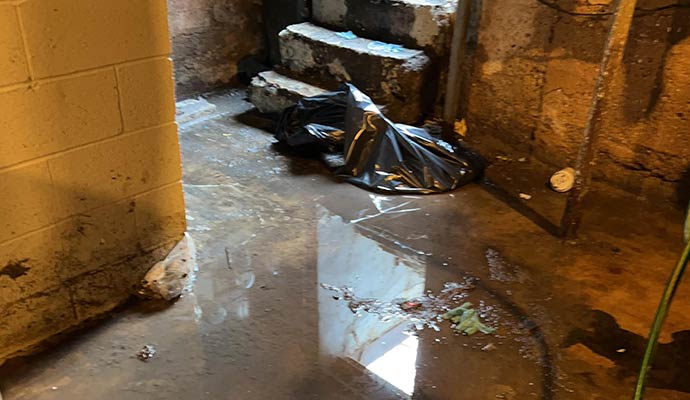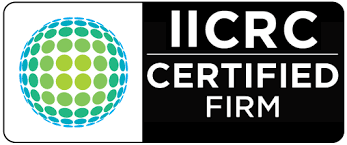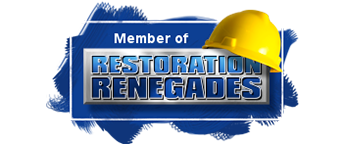How to Clean Your Basement After a Sewer Backup
A sewage backup can be caused by flooding, a damaged sewer line, a clogged sewer line if something foreign is in your drain line, or there are tree roots in your sewer line. This toxic, expensive problem can be a DIY, but consider calling the experts at PDQ to tackle the job, so you don’t have to deal with it.
Here Are the Steps You’ll Need to Take to Be Ready for a Thorough Basement Cleaning After a Sewage Backup.

-
1.Protect your house and yourself.
Black water is present when there is a sewer backup. Prevent this from getting to other parts of your house by closing off doors to rooms that are not contaminated. Don’t go in those rooms until you have finished the job and have thoroughly cleaned up to reduce the risk of tracking debris and water from the backup into other house rooms.
Protect yourself by wearing rubber gloves, boots, waterproof coveralls, and a face mask. And always wash up using hot water and a strong soap when finished.
-
2. Find the source, and drain the source.
Identify the source of the sewer backup. Use the sump pump, and remove water by hand using buckets or industrial shop vac.
-
3. Move everything
For the items you can salvage, put them in a bag, and move them to another place where you can clean and sanitize them later. For anything you cannot rescue, bag it up and put it in a place where it will be safe to store until you can throw it away. For any remaining sludge or debris, use a push broom and shovel to remove it and put it in bags to dispose of.
-
4. hovel, do not use your hands.
Using heavy-duty plastic bags, shovel the sludge and debris into the bags, and never use your hands. Remove the contaminated materials from the area. After all the sludge and waste are eliminated, you’ll need to sanitize any surfaces which come in contact with the sewage water. Use a ratio of 1 cup bleach to every 1 gallon of water to thoroughly wipe and rinse affected areas.
-
5. Remove the flooring.
Any flooring contaminated by the sewage water needs to be removed and disposed of. Put any flooring–vinyl, carpet, etc.–into heavy-duty bags, secure them, and remove them from the area.
-
6. Use a wet vac to finish up.
If you still can use electricity in the basement, you’ll want to remove any remaining contaminated water using a heavy-duty wet vac. Do this 2-3 times, emptying the contents of the wet vac into a toilet, never down a drain, after each pass.
-
7. Scrub and rinse from top to bottom.
All surface areas affected by the sewage backup must be washed with hot water and a strong detergent. A low-sudsing detergent will help you manage this part of the job more efficiently, especially when rinsing.
-
8. Time to sanitize.
Any surface that has come into contact with the contaminated sewage water should be sanitized. For this step, you’ll use the same ratio of 1 cup of bleach to 1 gallon of water, wiping every surface down from top to bottom. When sanitizing the floors, use a strong push broom instead of a mop.
-
9. Inspect the sump pump.
If your sump pump was operational and you used it for this job, you’ll want to inspect it and ensure it is still in good working condition. This may be another job for a professional if you are unsure of proper pump maintenance.
-
10. Begin the drying stage.
You can open the windows, as long as the humidity is low, to decrease the chance of mold starting to grow in the high-moisture content areas. Use large fans to set them up so that fresh air is created using crosscurrents. You can also enlist the help of a dehumidifier to decrease the drying time, but be aware it will still take several days, maybe longer, to completely dry.
-
11. Clean yourself up.
Back to that soap and hot water direction. Do not save any of your clothes or cleaning cloths. Any protective gear you wear, you will need to wash and sanitize. Wash in a shower of hot water using antibacterial soap.
-
12. Call for an inspection.
Give us a call at PDQ Restoration, where we can arrange for a licensed electrician and our professionals to come in and do a home and sewer inspection to determine if a sewer repair or a sewer line cleanout is needed. A sewage backup can cause issues you should be aware of now and in the future, so do your due diligence to prevent future problems. Our experts will also be able to check for any growth areas of mold, which could lead to unhealthy fungal growth. You’ll want to check the basement for mold after the cleanup regularly.
Sometimes, you’ll want to leave the job to the professionals. For example, if your floor is completely ruined, you have any damage to your furnace or air handlers, the exposure time of the contaminants has been longer than a few hours, or the backup has spread into other areas of the house.
Use these tips for a minor sewage backup issue, but if you need help, contact us. Our professionals are certified and equipped to handle this dirty work for you.

















